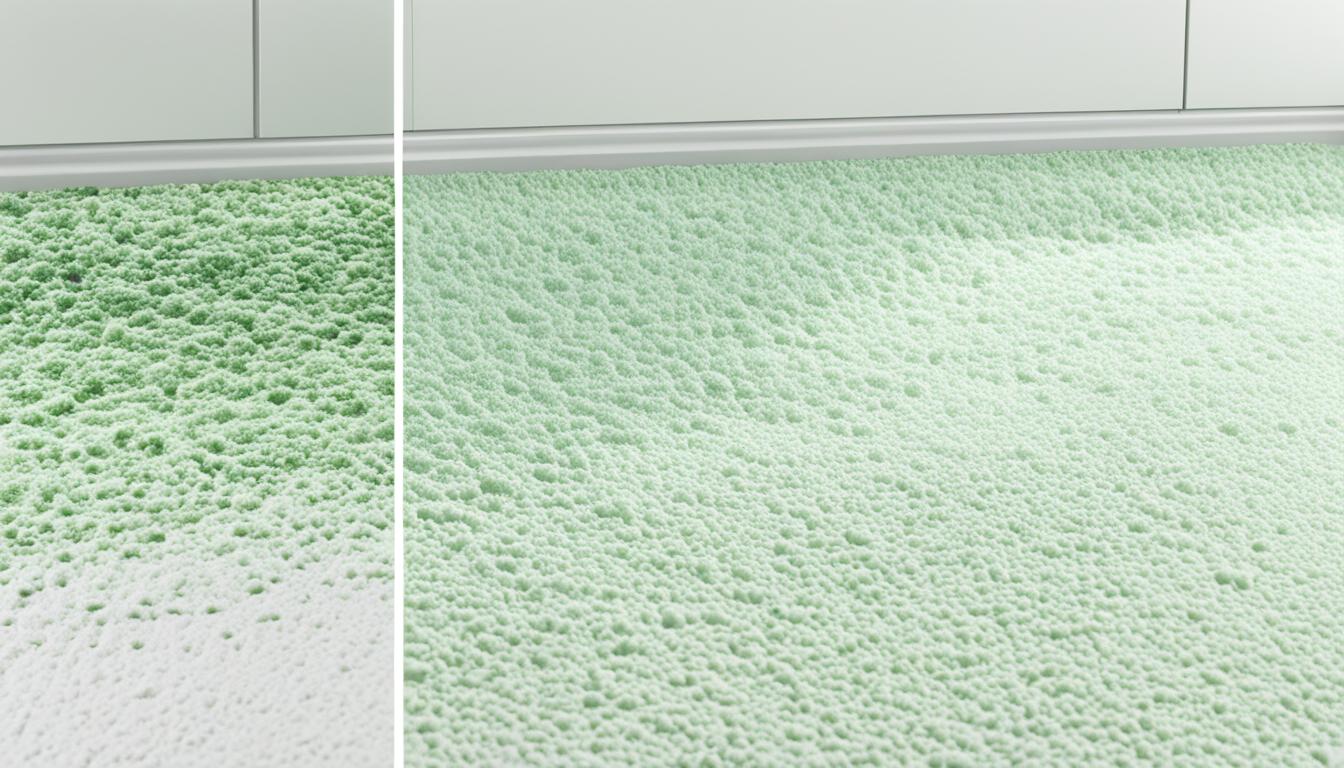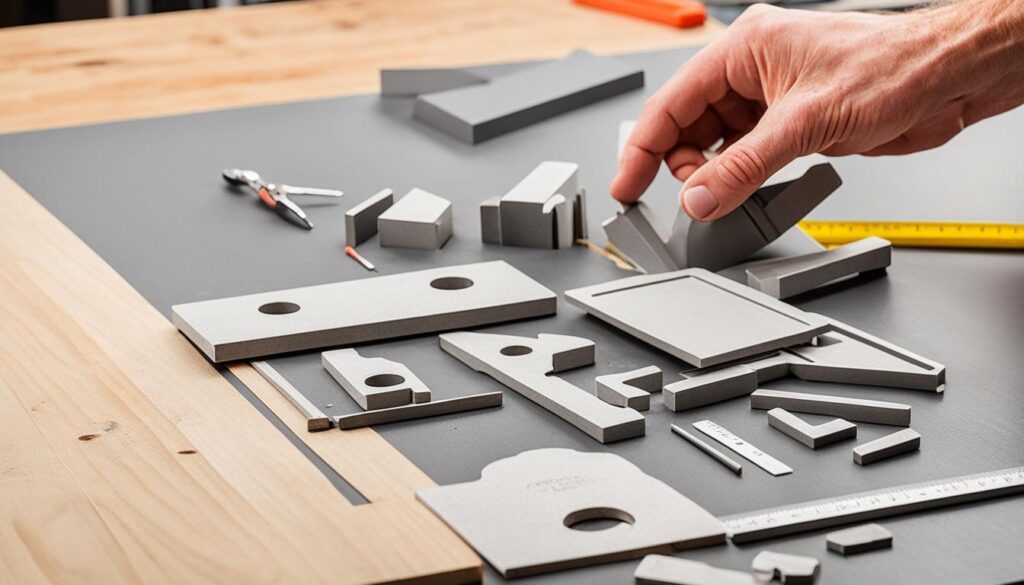
Discover the Secrets of t Mold
In the world of flooring, achieving seamless transitions is essential for a polished and professional look. Enter t mold, the secret ingredient that allows for smooth transitions between different types of flooring materials. Whether you’re working on a residential or commercial project, understanding the ins and outs of t mold is crucial for creating a flawless finish.
T mold, also known as transition moldings, is a versatile solution that bridges the gap between two different types of flooring, ensuring a seamless transition and preventing any unsightly gaps or uneven edges. Whether you’re transitioning from hardwood to carpet, tile to laminate, or any other combination, t mold makes the process effortless, providing a visually appealing and durable result.
In this section, we will uncover the secrets behind t mold and explore its use for achieving seamless transitions in flooring. We will delve into various aspects of t mold selection, installation, and maintenance, providing valuable insights for professionals in the industry.
Key Takeaways:
- T mold is a versatile solution for achieving seamless transitions between different types of flooring.
- T mold bridges the gap between flooring materials, ensuring a smooth and visually appealing transition.
- Proper selection and installation of t mold are essential for achieving a seamless result.
- Maintaining t mold through regular cleaning and inspection will help prolong its lifespan.
- T mold enhances the aesthetic appeal and functionality of flooring projects.
Professional Insights into t Mold Selection and Installation
In this section, we will provide valuable insights into the selection and installation of t mold. Choosing the right t mold and installing it properly are crucial factors in achieving seamless transitions in flooring. Let’s explore the different types of t mold available, their features, and how to make the best selection for specific flooring applications.
Types of t Mold
When it comes to t mold selection, it’s essential to consider the different types available. Each type offers unique features and benefits, catering to diverse flooring requirements. Here are some commonly used t mold types:
- T-Molding: This type of t mold is perfect for joining two floors of the same height. It creates a smooth transition, allowing easy movement from one area to another.
- Reducer: Reducers are ideal for bridging the gap between floors of different heights. They create a gradual slope, ensuring a seamless transition and preventing tripping hazards.
- Threshold: Threshold t mold is commonly used to transition between different types of flooring, such as a transition from hardwood to carpet or tile. It provides a neat and aesthetically pleasing transition point.
By understanding the features and benefits of each t mold type, you can make an informed decision when selecting the right one for your flooring project.
Proper Installation Techniques
Installing t mold correctly is crucial for achieving a seamless and durable result. Follow these step-by-step instructions to ensure precise installation:
- Clean the installation area thoroughly to remove any dust, debris, or adhesive residue. This ensures a clean surface for proper adhesion.
- Measure and cut the t mold to the desired length, using appropriate tools such as a miter saw or a coping saw.
- Apply a suitable adhesive to the back of the t mold, following the manufacturer’s instructions.
- Press the t mold firmly onto the floor, aligning it with the transition area.
- Secure the t mold in place using finishing nails or screws, if necessary.
- Wipe away any excess adhesive and clean the t mold for a finished look.
Following these installation techniques will ensure a professional and seamless finish, enhancing the overall aesthetics of the flooring.

Image: The image showcases the process of t mold selection and installation, highlighting the importance of a precise fit and seamless integration.
With the proper selection and installation of t mold, you can achieve seamless transitions in your flooring, creating a visually appealing and functional space. In the next section, we will discuss the essential aspects of maintaining t mold to prolong its lifespan and keep it looking its best.
Maintaining t Mold: Tips for Longevity
Proper maintenance is crucial for ensuring the longevity and pristine condition of your t mold. By implementing regular cleaning and inspection routines, as well as addressing common issues promptly, you can extend the lifespan of your t mold and keep it looking its best.
Regular Cleaning and Inspection
To maintain your t mold, start by regularly cleaning it using a mild soap or cleaning solution and a soft cloth or sponge. Avoid using abrasive cleaners or harsh chemicals that can damage the finish of the t mold. Gently wipe down the surface, paying attention to any crevices or corners.
After cleaning, thoroughly dry the t mold to prevent moisture buildup, which can lead to mold or mildew growth. Ensure all water or cleaning residue is removed, especially from the joints and edges.
Additionally, make it a habit to inspect your t mold periodically for any signs of damage, wear, or discoloration. Look for cracks, chips, or peeling in the finish, as these issues can compromise the functionality and aesthetics of the t mold. If you notice any damage, consider repairing or replacing the affected section as soon as possible.
Common Issues and Troubleshooting
Despite proper maintenance, t mold may encounter some common issues over time. Here are a few troubleshooting techniques for addressing these problems:
- Scratches or Scuffs: For minor scratches or scuffs, you can often use touch-up markers or color-matched wax fillers specifically designed for t mold. Apply the product according to the manufacturer’s instructions, blending it seamlessly with the surrounding area.
- Loose or Unsecured t Mold: If you notice that your t mold has become loose or unsecured, you may need to reattach it. Use an appropriate adhesive recommended by the t mold manufacturer to ensure a secure fit. Follow the adhesive’s instructions carefully and allow sufficient drying time before putting any weight or stress on the t mold.
- Discoloration: Over time, t mold may experience discoloration due to exposure to sunlight, moisture, or aging. To address this issue, you can consider refinishing or repainting the t mold. Consult with a professional to determine the most suitable refinishing method for your specific t mold material.
By addressing these common issues and following the recommended troubleshooting techniques, you can maintain the durability and appearance of your t mold for years to come.

Keeping your t mold well-maintained and regularly inspected ensures it remains in excellent condition, providing a seamless transition and a polished look for your flooring projects. With proper care and attention, your t mold can maintain its longevity, providing both functional and aesthetic benefits.
Conclusion
Throughout this article, we have explored the secrets of t mold and its role in achieving seamless transitions in flooring. By selecting the right t mold, employing proper installation techniques, and practicing ongoing maintenance, you can unlock the full potential of this versatile element. The careful consideration of t mold not only enhances the aesthetic appeal of your flooring projects but also ensures their long-lasting functionality.
By following the professional insights shared in this article, you can confidently navigate the world of t mold and make informed decisions for your flooring installations. Remember to assess the specific requirements of your project, choose the appropriate t mold type, and execute the installation meticulously for excellent results.
If you encounter any challenges or require assistance with mold assessments, prevention, or remediation, we recommend contacting Fix Mold Miami. As South Florida’s highest-rated service provider, they specialize in mold assessments and offer comprehensive solutions to ensure a safe and mold-free environment. To connect with their expert team, call 305-465-6653.




